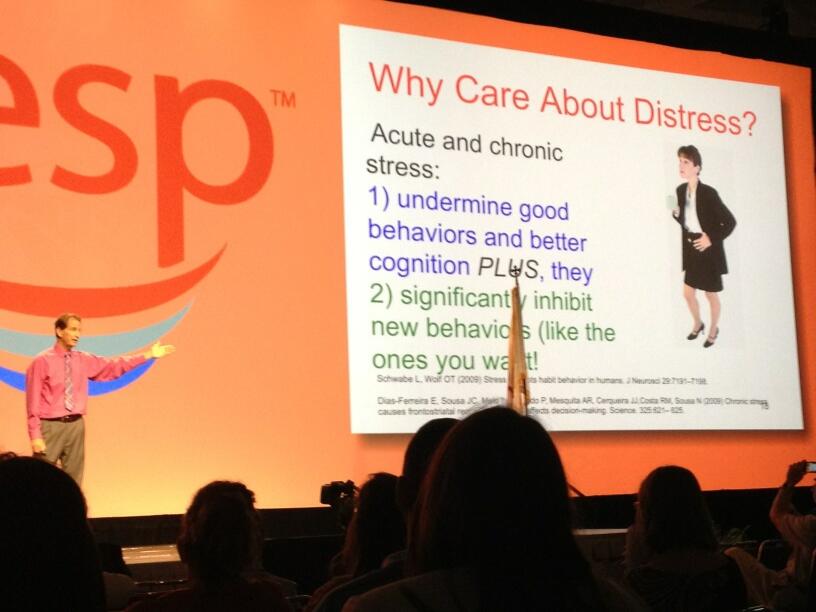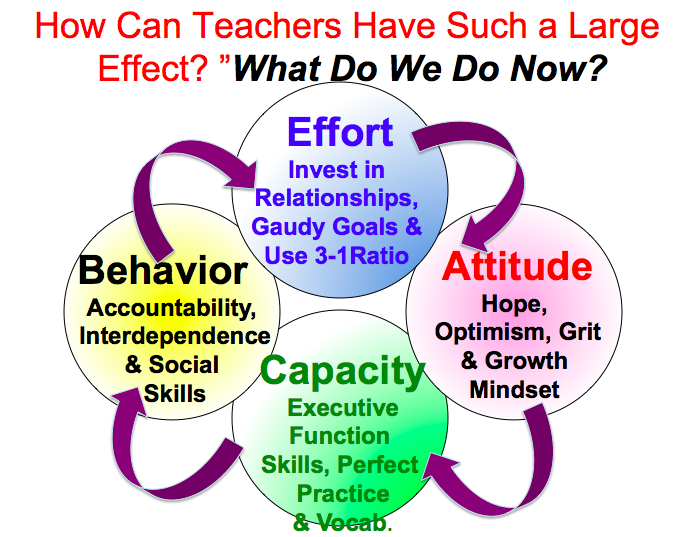Focusing on What Matters: Four Facts and Strategies from Eric Jensen
Conference News Online – 2013 By Adam Drummond “When teachers focus on what matters most, good things happen,” says Eric Jensen.
By Adam Drummond
 “When teachers focus on what matters most, good things happen,” says Eric Jensen.
“When teachers focus on what matters most, good things happen,” says Eric Jensen.
So, what matters most? Jensen explored that in his plenary session, “Teaching With Poverty in Mind.” In just seventy minutes, he generated more wonder and excitement for conference attendees than a trip to Neverland with Peter Pan might. Finding the answers to alleviating poverty’s impact, though, isn’t as simple as heading three stars to the right and straight on ‘till morning. Nonetheless, Jensen provided four key facts and strategies that educators can take to support all students with an environment of acceptance and excellence.
Fact #1: Teachers can change the structure of the brain in just five days.
Neurogenesis is the brain’s production of new cells. The brain is so much more plastic than scientists previously thought. But factors such as distress, inactivity, boredom, and depression can suppress neurogenesis. Educators can maximize students’ neurogenesis with exciting, multifaceted classroom activities, and by getting students moving—research has found that the hippocampus creates new neurons after exercise.
- School Strategy: Never keep kids in at recess. One minute of new activity doesn’t produce new neurons, but 20 minutes does.
Fact #2: Five years in a row of great teaching can erase the effects of poverty on students.
Great teaching is about more than just instruction—classroom climate ranks in the top ten contributors to student achievement. Relationships between teachers and students can decrease distress in students. The well-known adage, “Kids don’t care how much you know until they know how much you care” rings true.
- School Strategy: Introduce teachers to Jensen’s BASE: Behavior, Attitude, Capacity, Effort system. (See graphic.)

Fact #3: We must demand excellence. Period.
It doesn’t get much clearer than that. Jensen emphasizes that creating excellence and high expectations is a good thing. When high expectations aren’t reached, the result still places you higher than where you would be if you settled for mediocrity. When you have high expectations, your students rise to them. Jensen shared an example of an all-boys high school with at-risk students that has sent 100 percent of its graduates to college three years running. So, don’t give excuses. Four-year-olds can point fingers; you can only look in the mirror.
- School Strategy: Jensen gives six steps to creating High Achieving Schools:
- Set nearly impossible “gaudy goals.”
- Foster collaboration and trust. Without these qualities in your school, you can’t reach excellence.
- Connect the dots between data, behavior, and learning on a daily basis.
- Build the BASE (see above).
- Cultivate good culture by taking responsibility rather than pointing fingers, and using feedback from colleagues and administration.
- Manage yourself as a leader.
Fact #4: Empathy, optimism, and patience must be taught.
Fun fact: Brain research indicates that our minds are wired for just six emotions: sadness, joy, disgust, anger, surprise, and fear. In order to create emotionally and cognitively sound students, we must teach humility, forgiveness, empathy, optimism, compassion, sympathy, patience, shame, cooperation, and gratitude. We wrongly assume our students already know or exhibit these emotions. We must be specific in not only teaching, but also recognizing these emotions in our students.
- School Strategy: Develop a plan that works for your school to ensure that teaching of emotions occurs daily and routinely. One place to start: Prohibit sarcasm. Oh, and give compliments—3 compliments a day is a good place to start.
Next Steps
Jensen left attendees with three simple steps to making a change at your school: ABC, or Agree, Buy-In, and Commit. Agree on a strategy, generate buy-in with your team, and commit to a plan.
Learn more about these facts and strategies in Jensen’s PowerPoint presentation: Jensenlearning.com/NAESP2013#
Adam Drummond is principal of Lincoln Elementary School in Huntington, Indiana.
Copyright © National Association of Elementary School Principals. No part of the articles in NAESP magazines, newsletters, or Web site may be reproduced in any medium without the permission of the National Association of Elementary School Principals. For more information, view NAESP’s reprint policy.

